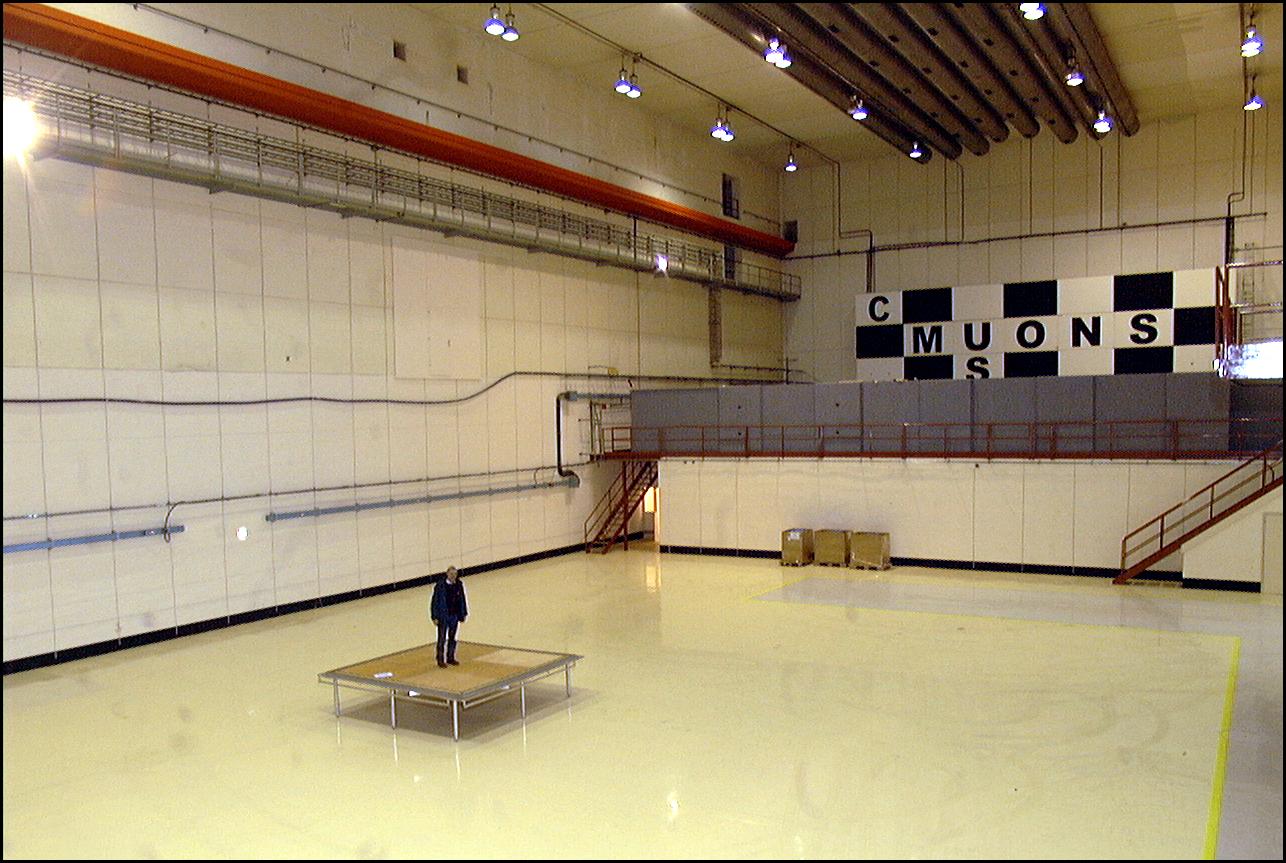Clean-up at the ISR
After six months of work, the part of the ISR coming under EP Division has been emptied and refurbished. The area is now ready to start building the LHC experiments.People who know the ISR from way back are likely to be surprised when they push open the doors to the old collider. Whereas the part of the tunnel allocated to EP (Experimental Physics) Division now stands empty, a few months ago, it was piled high with odds and ends.
For more than 20 years, this part of the former Intersecting Storage Rings, a full quarter of the loop, had been used as storage space. Both items of value and pure junk had been dumped there, ranging from detector prototypes and 30 years old pumps with signs saying 'not to be thrown out', down to planks, a beautiful velvet armchair, and hundreds of electricity racks.

Aloïs Girardoz, lost in the huge ISR hall, which will now be used for building the muon chambers of CMS.
An audit carried out in 1996 on the research sector storage areas and accelerators signalled an end to it being used as a giant lumber-room. The audit showed that EP Division had 16,000 square metres of storage space at CERN. The space was seen as essential for building the four monumental experiments of the future LHC. So the EP Division's SMI (Space Management and Infrastructure) Group decied on a major clear-out.
The largest amount of space was undoubtedly at the ISR, where EP Division has a total of 6000 square metres. The big clean-up operation began last April and took six months to complete. 'There was so much stowed there that the handling machinery could not get in', recalls Alan Ball, head of SMI Group. And that was not the only problem. 'People were so used to storing things there that as fast as things were taken away it filled up again', says Aloïs Girardoz who is responsible for the zone in the SMI Group. In the removal operation, a kid-gloved approach had to be used, to ensure there were no hard feelings 'We had to find the owners of everything we took out, some of them already retired or even dead,' he added.
Most of what was stored had only sentimental value at most, and was destined for the scrap heap. But a few items have been kept for the museum, like a piece of the UA1 detector. Other finds such as magnets, have been sent for storage to a 700 square metre prefabricated metallo-textile storage hall at the end of the Meyrin site. But the watchword is now to store the minimum possible.
The ISR have had a facelift : the electricity has been revamped, the floors renovated, the bridge crane upgraded to carry five tonne loads. It is far from the last word in luxury, however. The refurbishment work has produced major savings, avoiding the need for new buildings. The quarter ring will be used for building muon chambers for the CMS experiment. A small area is still being used for the Compass experiment. The extension of Hall 184, beside the ISR, is already being used to produce the liquid argon calorimeter for ATLAS.

